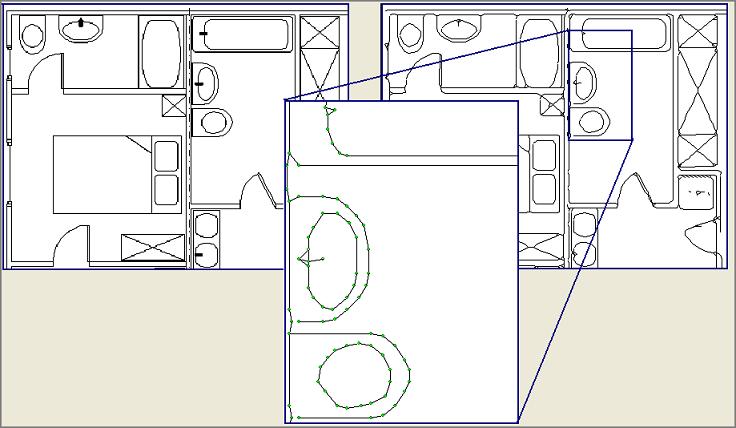Introduction
Vectorization is usualy the first step in pattern recognition of digital images.
Several methods of image vectorization has been proposed so far, but most of them are
highly specialized for specific set of images. In this work, a new method of image vectorization
based on Divide&Conquer paradigm is presented. This method excels in speed an reliability, but
the most important feature is its ability to solve most, even highly specific tasks. The method
is so robust, that it can be applied even on real images (digital photos),
where most other methods fail.
In standard picture format (bitmap for example), the picture is represented as a set of pixels, each with corresponding color. Automatic recognition of an object is difficult task in this representation, because no global information is present. In vectorization process, this set of pixels is transformed into the set of vectors (each edge in image is represented by vector with corresponding length and direction for example). After the image is vectorized, more useful data about objects in image is acquired. In specific set of images, like the blueprints, ground plans, or cartoons, entire image can be represented by its vectorization very easily. Vectorization in these sets is usually solved by specially designed algorithm. But Divide & Conquer based vectorization can solve all these tasks without any specific modifications.

Figure 1.1: Original picture on the left and the vectorizerd image on
the right. Zoomed sector in the middle shows the precision of the vectors.
Thanks to the robustness of this new method, application in different fields of object recognition in real images can be utilized. Relief of the face, the eyes or the mouth can be easily identified in vectorized image. The recognition of text (even the handwriting) is reduced to search for specific string of vectors. Additional applications in different field of computer graphics and vision (for example in feature-based stereo) are also possible.
Back





